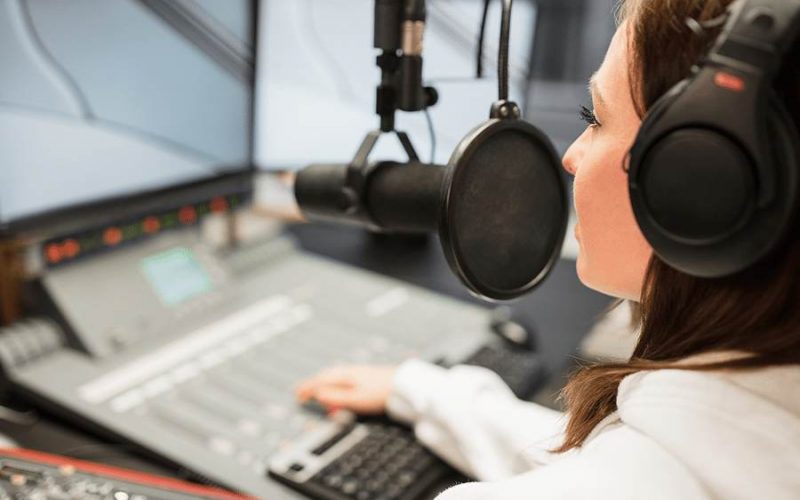Radio advertising is a type of marketing technique that promotes goods or services by using the radio, both traditional channels, and satellite and internet radio. In many circumstances, it is a less expensive method of advertising, especially in comparison to tv ads. This article will take you to Radio advertising cost, types, IHeartRadio, examples, packages, advantages, and disadvantages.
Cost of Radio Advertising
Radio advertising is one of the most efficient kinds of marketing. The cost of engaging a specific audience, on the other hand, will vary based on how long the advertisement is, what time it is aired, and which day it is run.
The Cost of Radio Advertising Is Determined by Advertisement Length
The average advertisement lasts 30 seconds, but you may also buy 15 second, 60 second, or even 90-second advertising. A normal 30-second advertising schedule in smaller towns will cost around $900 per week, whereas larger markets such as Sydney and Melbourne will cost around $8,000 per week.
The cost of Radio Advertising Depends on When It Is Broadcast
Advertising that runs during the morning breakfast or afternoon drive. it shows typically costs more than ads that run during the mid-morning, afternoon, or evening hours. At busy hours, you should anticipate paying around $20 to engage 1,000 listeners, and close to $10 or $15 during off-peak hours.
The cost of Radio Advertising Depending on the Day of the Week
The cost of radio advertising is usually greater on Tuesdays, Wednesdays, and Thursdays. And it is often lower on weekends. This is because more people are in their automobiles or listening to the radio while working during the week. As a result, you should anticipate paying towards the top of your budget during the middle of the week. And near the bottom during the rest of the week. Although consumers on a tight budget may believe that purchasing more advertising on less expensive days of the week is a smart idea. Experts, however, suggest that adverts are more successful when played on the same day and time of day each week.
Types of Radio Advertising
What types of radio commercials would be most effective for your company? Let’s look into your options.
#1. Live Reading
This is one of the types of radio advertising. A radio personality voices your commercial live on the air. Most broadcasters’ on-air talent is well-known, and they contribute knowledge to the communities in which they work. Moreover, Having a recognized and popular voice on your ad can help generate engagement. And will make your advertising stand out from the pre-recorded ones that will also be airing on the station.
#2. Jingle Advertising radio types
Memory and music have a close link. Creating a distinctive jingle to accompany your advertising is one approach to make it stand out. Furthermore, A well-produced jingle or musical background elevates your brand’s professionalism and is a sure-fire approach to garner notice.
#3. personalized Commercial
Including characters in your radio advertising plan is another approach to make your message more dramatic and memorable. Without graphics, listeners are left to form their own mental images of who and what your brand is. Therefore, when you’re writing your character’s story, make it one-of-a-kind! The more real your character is, the more audiences will want to know what happens next, which means they will listen to your radio show.
#4. Types of radio Advertising is Testimonia
Someone who can give a firsthand perspective of how your company improves their lives is a terrific method to capture the attention of a listener. Moreover, It’s genuine, relatable, and credible. Because trusting other people is ingrained into our brains, we believe other people more than advertisements. Allow your product’s users to talk for it and market it for you through testimonials.
#5. Types of radio Advertising IS Sponsored
Sponsorship is the way to go if you prefer a more subtle approach to radio advertisements. Nevertheless, You can endorse regular programming such as headlines, weather reports, traffic updates, and so on. Often this ensures that your commercials air first during commercial breaks, allowing you to reach more listeners before they switch stations or tune out during long breaks.
Which one do you prefer? It’s a difficult choice to make. Promoting your business through a conventional marketing tactic, which is often neglected in today’s field of digital marketing, gives you a competitive advantage. Whatever ad you choose, implementing an effective message will result in a very successful long-term radio campaign, and your company will benefit as a result.
Examples of Radio Advertising
examples of live lead radio advertising
“My dear listener, when you enjoy Michael Jackson’s magnificent song, I’d want to remind you of the XYZ Studios on 54th Street. (Music is still playing or is playing in the background.) They have invested in cutting-edge technology to enable you to offer world-class audio. (music). Call this number, XYZ, to schedule a viewing or recording session. Moreover, This is the studio where the world’s next musical celebrities are created. See you there on Saturday during their open house.”
Take note of how the radio broadcaster engages listeners as though they are having a discussion. The listener is focused on the host’s speech and is not interrupted by the sound of an advertisement. Listeners are almost certain to get the information because they don’t want to miss anything from the host.
The script for such an advertisement is typically a skeleton or outline. You will negotiate on the number of times your advertisement will be mentioned with the host or marketing agent. Furthermore, You can also decide on the specific keywords or phrases that must be included throughout the mention.
Final Thoughts on Radio Advertising Examples
When promoting their products, every advertiser has a variety of radio advertising examples to select from. The value provided by the advertising campaign should be the most significant aspect.
To reap the examples of radio advertising, you must select the style of advertisement that best appeals to your target audience.
Radio Advertising Advantages & Disadvantages
The Advantages of Radio Advertising
Reach Out to a Large Number of People
Radio advertising, like television advertising, has the power to reach a huge number of people at the same time. You can also select which station your advertisement will air on, allowing you to properly select your target demographic. This is one of the most beneficial features of radio advertising.
It has to be more affordable.
A radio advertisement contains many fewer words than, say, a television commercial. You save a lot of money by not using expensive camera equipment, clothes, sets, performers, and so on. While you save money on the commercial, you also save a lot of money on the time it takes to play your ad. A radio time slot is significantly less expensive than a television time slot.
You have the ability to produce quickly.
A television commercial can take weeks to create, whereas radio commercials can be completed in a matter of days. You can also create many ads at the same time and utilize them on different networks or days. This allows you to keep your adverts relevant and fresh, attracting more listeners.
Radio’s Influence
The radio industry is a tight-knit one. Radio DJs frequently have a lot of sway over their listeners, and if you can persuade the host of the show to introduce your product, it’s like obtaining a direct endorsement from them.
Disadvantages of Radio advertising
There are Important Locations
When it comes to radio, there are two times when almost everyone tunes in the morning and evening commute. These would be the two times your radio advertising will get the most attention. Nevertheless, there are only so many places available, and landing one on a well-listened-to station might cost a pretty penny.
We are All Changing The Channel
It’s no surprise that as the ad starts, almost everyone changes the station. There are so many other channels still broadcasting music that it can be tough to keep them listening long enough to hear your advertisement. Hence, This is without a doubt one of the most significant drawbacks of radio advertising.
Not Suitable for All Products
Not all items and services are appropriate for radio advertising. If you’re trying to promote your new shoe designs, it can be tough without a visual depiction, which radio makes impossible.
IHeartRadio Advertising
Only iHeartRadio advertising, with over 860 radio stations, can provide local engagement with national reach. Individual station branding enables you to interact with a diversified audience in local markets around the country.
iHeartRadio Advertising in National
With iHeartRadio advertising industry-leading online music provider has more than 150 million registered members. And is accessible on over 250 platforms and more than 2,000 different network devices. providing innumerable advertising and collaboration opportunities ranging from unique branded specially made stations handmade by iHeartMedia’s world-class programming to pre-roll videos that are fully integrated into the provider.
iHeartRadio Advertising in Digital
iHeartMedia’s significant digital assets include dozens of channels. And show websites, approximately 150 million registered iHeartRadio subscribers, and over 210 million social media friends and followers. Moreover, iHeartMedia leverages these one-of-a-kind digital assets with a tremendous reach to develop new campaigns and programs for important advertising and marketing partners.
Podcasts iHeartRadio Advertising
iHeartRadio advertising is America’s #1 podcaster, according to Podtrac, with more than 150 million podcast downloads per month and more podcasts in the Apple Top 200 than any other publisher. iHeartMedia is the home of the most successful podcast of all time, “Stuff You Should Know,” as well as the creator of hits such as “The Ron Burgundy Podcast” and “Atlanta Monster.” And, thanks to the breadth of its leading media footprint, iHeart has the best local podcasts from our popular radio personalities – as well as the ability to include brand sponsors on a local, regional, and national level.
What Is the Name of the Radio Advertising?
The most popular forms of advertising are “infomercials,” which are longer shows that typically last up to an hour, and “spot commercials,” which typically last no more than a minute.
What Serves as Advertising’s Primary Objective?
A sponsored type of communication that promotes service, product, or brand is known as an advertisement. Advertisements are a tool used by marketers to assist businesses in achieving their goals and boosting profits. They frequently create adverts for particular target markets.
What Is the Fundamental Purpose of Advertising?
The three main goals of advertising are to inform, convince, and remind. Informative advertising raises consumer knowledge of companies, their goods and services, and concepts.
What Draws People’s Attention To Advertising?
Through well-crafted graphics, which usually incorporated an image of the product—sometimes front on, sometimes from the side—as well as the headlines and the brand’s insignia, it captures our attention.
How Does Advertising Draw in Consumers?
By informing current and future customers about your new product launches, exclusive deals, and enhancements, advertising can boost sales. Advertising can help you develop or build a distinctive brand for your organization in addition to reminding current clients about it.
Conclusion
The radio advertising is a way of marketing a product and at the same time getting the necessary information that you need.
Radio advertising FAQ’s
How much does a 30 second radio ad cost?
Radio advertising costs range from $200 to $5,000 per week, on average, depending on location and the size of the listening audience. The cost of producing the commercial is $1,000 to $2,500 depending on what is included, like music, voice actors, and editing.
Is radio a good way to advertise?
Radio is an effective advertising medium because it’s 100% audio-based. The advertiser’s message can resonate in the consumer’s ears with proper voice acting, sound design, and copy. A radio ad is cost-efficient, targeted, easy to track, and extremely effective if done properly.
How do you get sponsors for a radio?
Check with the peers: Firstly, Pick out the potential advertisers by reviewing your peers’ blogs, websites, forums, e-zines, and print magazines that cover your preferred talk show topics. Contact them and other similar companies to get sponsorships






